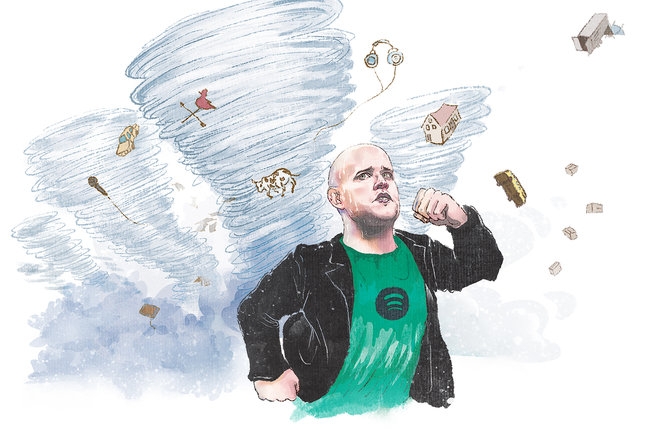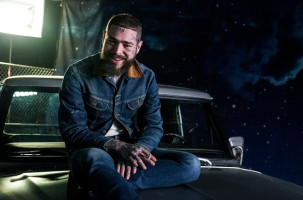It wasn't easy working Post Malone's 2016 single, "Congratulations," up Spotify's charts.
Despite its placement on playlists including Universal Music Group's Hip Hop Hits, Spotify's Fresh & Chill and user-generated NEW SH*T, the song "wasn't performing in a traditional sense," says UMG's senior vp global streaming marketing Jay Frank, even though data noticed by Republic Records president Avery Lipman showed it was "hitting home with a core audience." Only after weeks of bringing the data to the attention of an array of Spotify staffers did the UMG team convince the streaming service to help push "Congratulations" into its top 10. "We worked together to have a plan," says Frank.
While Republic pulled out all the stops to get the song streamed 532 million times to date, according to Nielsen Music, Spotify has been scrambling to launch an official channel for labels and artists to submit music for playlist consideration, with the goal of "supporting every release that comes out," says Nick Holmstén, Spotify's vp content and global head of shows and editorial. Though he says there's no perfect way to make that happen, Spotify wants to improve its ability to surface potential hits much earlier, to help crack what its executives call "the bandwidth problem."
"It's maybe the most important thing for us to solve right now," says Holmstén.
As Spotify amasses subscribers and drives revenue, it is facing an awkward problem for an orderly, data-driven tech company: how to cope with the onslaught of label reps, managers and promoters trying to work their songs up Spotify's charts by any means necessary. While labels and artists are comfortable competing for far fewer slots on terrestrial radio -- with each FM format adding only a handful of new tracks each week -- Spotify's system is presenting labels with new competitive challenges as it digests thousands of songs a day that vie for several hundred choice spots on the most popular of Spotify's 4,500 owned playlists.
Internally, labels also have been battling over who should be doing the promotion in the first place, after years of tasking digital sales teams to place music on streaming services.
"The sales guys are letting Spotify dictate what's on playlists," one radio promotion executive tells Billboard. "Nobody is pushing Spotify to say, 'We have a marketing plan. This is the song we're working.' "
Labels complain that they're also competing with music -- typically mood music or cover songs -- that Spotify can license at much cheaper prices from little-known producers and put on its playlists to reduce content costs. Spotify says it doesn't own any of those recordings, but some label executives fear the company could increase its use of cheap tunes on playlists, which would further crowd out their artists.
"I tell my boss I feel like I was given sticks and rocks in the desert and I'm trying to build a mansion," says Maxwell Adepoju, associate director of editorial and programming at RCA Records, who has worked with SZA and Bryson Tiller. "It's like the California Gold Rush, and we're all trying to figure it out at the same time."
Without a clear road map, several labels have begun enlisting at least five traditionally siloed departments -- digital, radio, sales, marketing and data -- to bombard Spotify's 150 programmers across the globe.
Holmstén says he hopes Spotify's new system, aimed for rollout later in 2017, will offer automatic playlist feedback to artists while helping programmers scan for worthy songs under their radar. "We're going to find a way to test these tracks on more users," he says.
The three majors have drawn up different battle plans to woo playlisters. One radio promotion executive from a Sony label says that while streaming isn't technically within his responsibilities, that hasn't stopped him from calling up the ex-radio execs he knows at Spotify to work records. At UMG, "it's more about the right person than the right department," says Frank.
Then there's the question of which playlists to attack. While Sony has its own playlist (Filtr), UMG invested in Frank's Digster, and Warner Music Group owns Topsify, they all lack the power of Spotify's.
Independent radio promoter Dale Connone, founder/CEO of in2une Music, helps labels and artists like Vérité land their songs on playlists made by influential users, which can get Spotify's playlisters' attention.
"A lot of new artists come to us and want to be on Today's Top Hits or Pop Rising, and it's not that easy," says Cannone. But while indie promoters have long served as brokers for labels and radio programmers, there aren't many indies shielding programmers such as Tuma Basa, Spotify's global head of hip-hop, from the daily flood of pitches.
"[At least] I can look at fan insights to verify if they're BS'ing or not," says Basa, whose RapCaviar playlist counts 7 million followers. "It's like, 'You're telling me someone is the hottest rapper in Dallas?' I can go look while we're on the phone."
Atlantic Records executive vp digital strategy Paul Sinclair encourages artists to start their own playlists, noting that Lil Uzi Vert's has 127,000 followers.
"How do we make sure we're not missing out on these next superstars?" Holmstén asks. "That's what keeps me awake at night."
This article originally appeared in the July 22 issue of Billboard.








